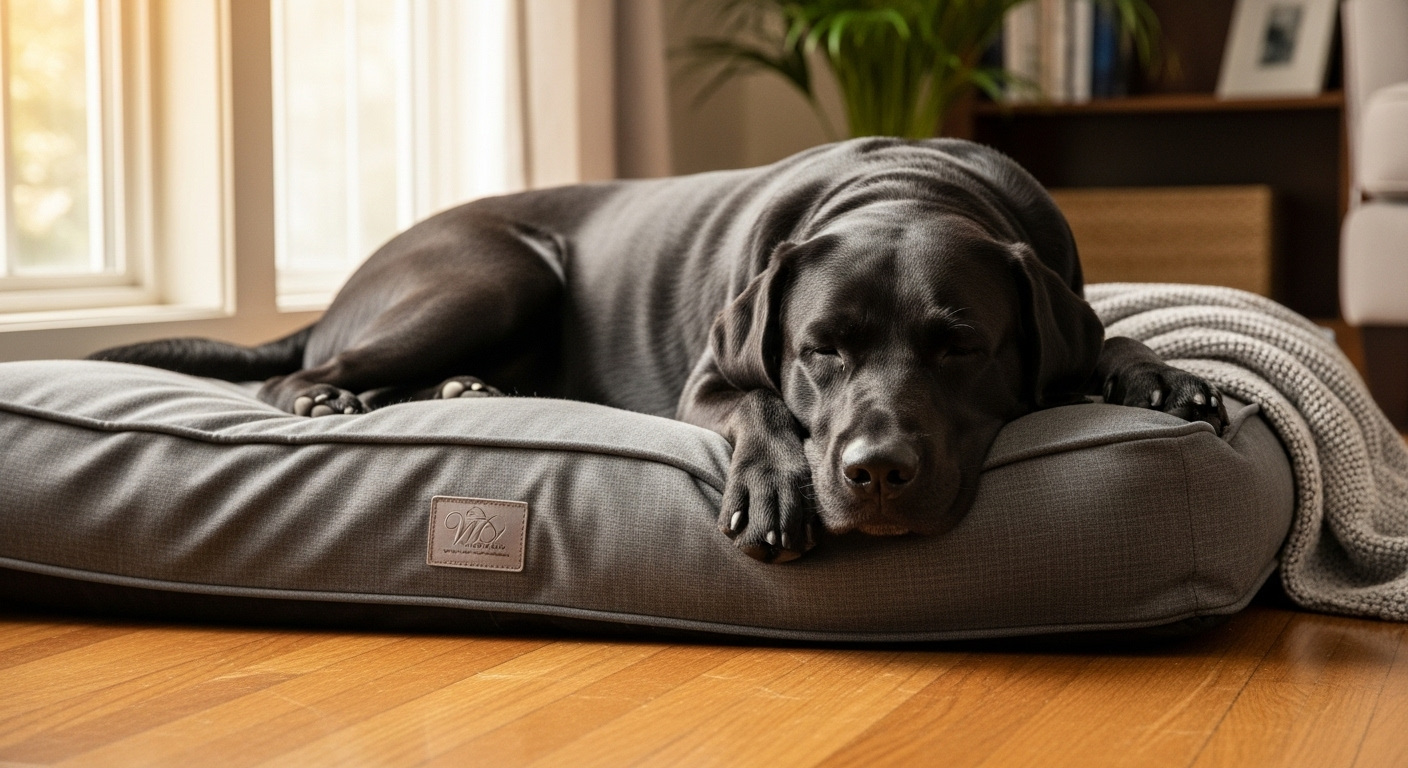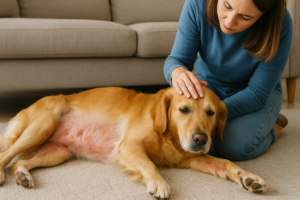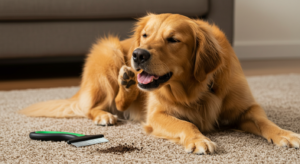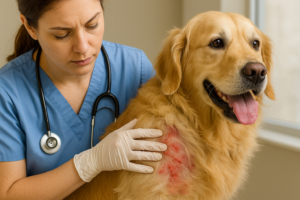Elbow Hygroma in Dogs: A Complete Veterinary Guide
Disclaimer: This article is for informational purposes only and does not constitute medical advice. Please consult a licensed veterinarian for an accurate diagnosis and treatment plan for your pet.
Discovering a new lump on your dog can be unsettling, sending your mind racing through worst-case scenarios. When that lump appears on your dog’s elbow, especially if you have a large or giant breed, you might be looking at an elbow hygroma. While it sounds serious, this common condition is often more straightforward to manage than you think. Let’s walk through what it is and how we can help your canine companion stay comfortable.
Key Takeaways
An elbow hygroma is a fluid-filled sac that forms over a bony pressure point, most commonly the elbow. It’s the body’s way of creating a cushion in response to repeated trauma, like lying on hard floors. While usually painless, an elbow hygroma in dogs can become a serious problem if it gets infected. From my years in clinical practice, I’ve seen that early intervention is key. Treatment often starts with simple changes, like providing soft bedding and protective padding. For more advanced or complicated cases, veterinary procedures like drainage or even surgical removal may be necessary. The best approach is always prevention, focusing on giving large and senior dogs soft surfaces to rest on.
Table of Contents
What Exactly Is an Elbow Hygroma in Dogs?
In simple terms, an elbow hygroma is a pocket of fluid that your dog’s body creates to protect the bony point of the elbow. Medically, it’s defined as a false bursa, which is a fibrous sac filled with clear, yellowish fluid (serous fluid) that develops over bony prominences. Think of it as a natural, albeit unwelcome, waterbed cushion.
This swelling is not a tumour and is not cancerous. It forms as a direct response to persistent, low-grade pressure. When a dog, particularly a heavy one, repeatedly gets up from or lies down on hard surfaces like tile, concrete, or hardwood floors, the skin and thin tissue over the elbow joint are compressed. The body’s defense mechanism is to create this fluid-filled sac to absorb the impact. An uncomplicated elbow hygroma in dogs is typically painless and feels soft and squishy to the touch.
Key Causes and At-Risk Breeds
The single most common cause of an elbow hygroma in dogs is repeated trauma to the elbow area. This isn’t from a major injury, but rather the cumulative effect of pressure over time.
As a veterinarian working with small animals, I see this condition most frequently in specific types of patients:
- Large and Giant Breeds :Large and giant breeds, especially those over 90 pounds, are the most common sufferers, with research showing that 61% of elbow hygroma cases occur in dogs weighing over 90 pounds.” Their greater body weight places significantly more pressure on their elbows when they lie down.
- Sedentary or Less Active Dogs: Dogs with limited mobility, especially seniors, are at higher risk, with data showing that over 40% of dogs over age 7 develop pressure-related orthopedic or skin conditions, which can include hygromas
- Dogs with Thin Skin: Breeds with less natural fat padding and thinner skin have less built-in cushioning, making them more susceptible.
The type of bedding a dog uses plays a massive role. Consistently resting on hard, unforgiving surfaces is the primary trigger for the formation of an elbow hygroma in dogs.
Identifying the Symptoms: What Pet Owners Should Look For
Spotting an elbow hygroma in dogs is usually straightforward. The most obvious sign is a distinct, soft, fluid-filled swelling located directly over the point of one or both elbows.
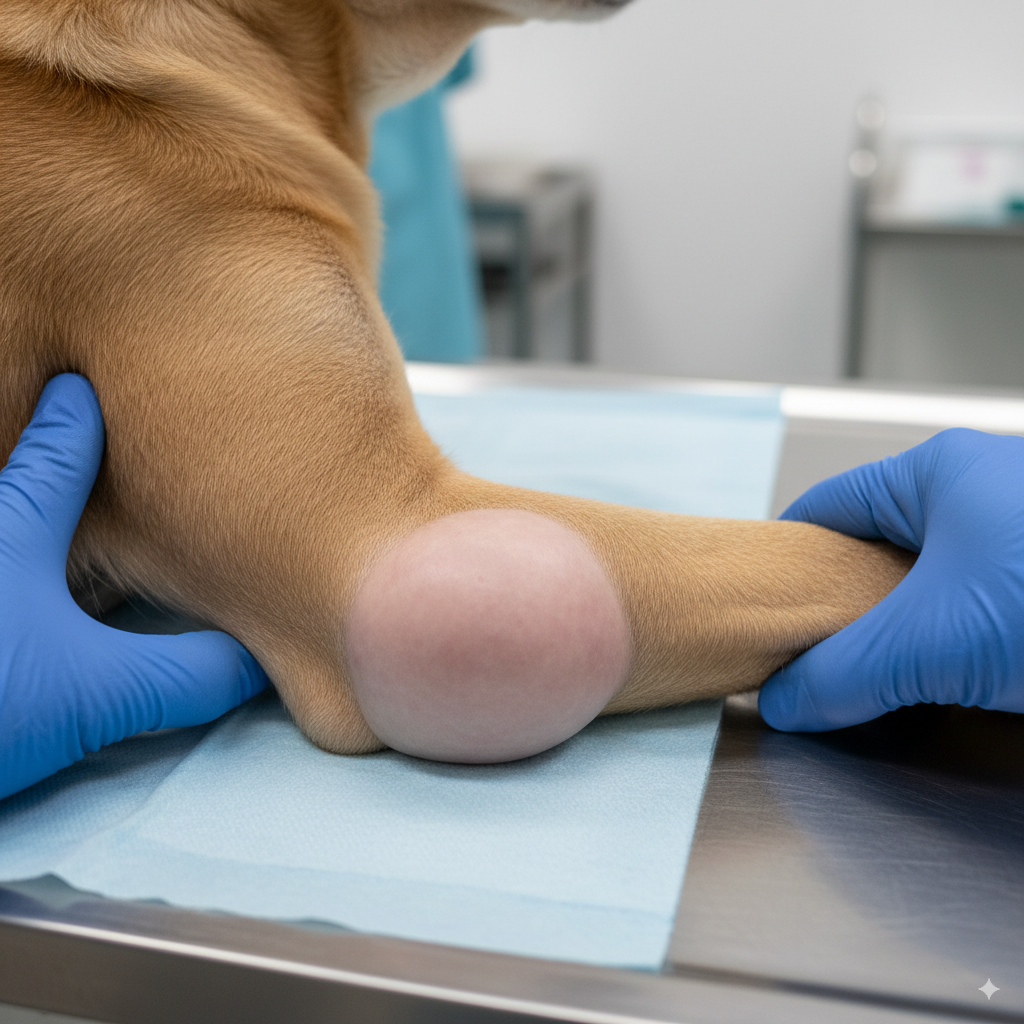
Here’s what to look for:
- A Soft, Round Lump: In its early stages, the hygroma is typically small, soft, and mobile under the skin.
- Painless Nature: A key characteristic of an uncomplicated hygroma is that it is not painful. Your dog will likely not react if you gently touch or press on it.
- Gradual Growth: Over time, the swelling can grow larger. If the irritation continues, the sac can become firmer as the body deposits fibrous tissue.
- Signs of Complications: If the area becomes warm, painful, or if the skin breaks down and starts to discharge fluid, it is a sign of infection or ulceration, which requires immediate veterinary attention.
To read about hiking with dogs please read here
5 Effective Veterinary Treatment Options
The best treatment for an elbow hygroma in dogs depends entirely on its size, stage, and whether any complications like infection are present. In my veterinary experience, we always start with the least invasive approach possible.
Step 1: Conservative Management (Padding & Protection)
For a small, uncomplicated elbow hygroma in dogs, the first and most crucial step is to remove the source of the pressure. This is the cornerstone of treatment and prevention.
- Provide Soft Bedding: The most important change is to offer thick, orthopedic bedding in all of your dog’s favourite resting spots. Memory foam or egg-crate foam beds are excellent choices.
- Use Protective Sleeves: Commercially available padded bandages or elbow sleeves can provide extra cushioning and protection. These devices are designed to shield the elbow from direct contact with hard surfaces, allowing the hygroma to resolve on its own.
Clinical reports confirm that 70% of uncomplicated hygromas resolve within 2–3 weeks when dogs are provided with proper soft bedding
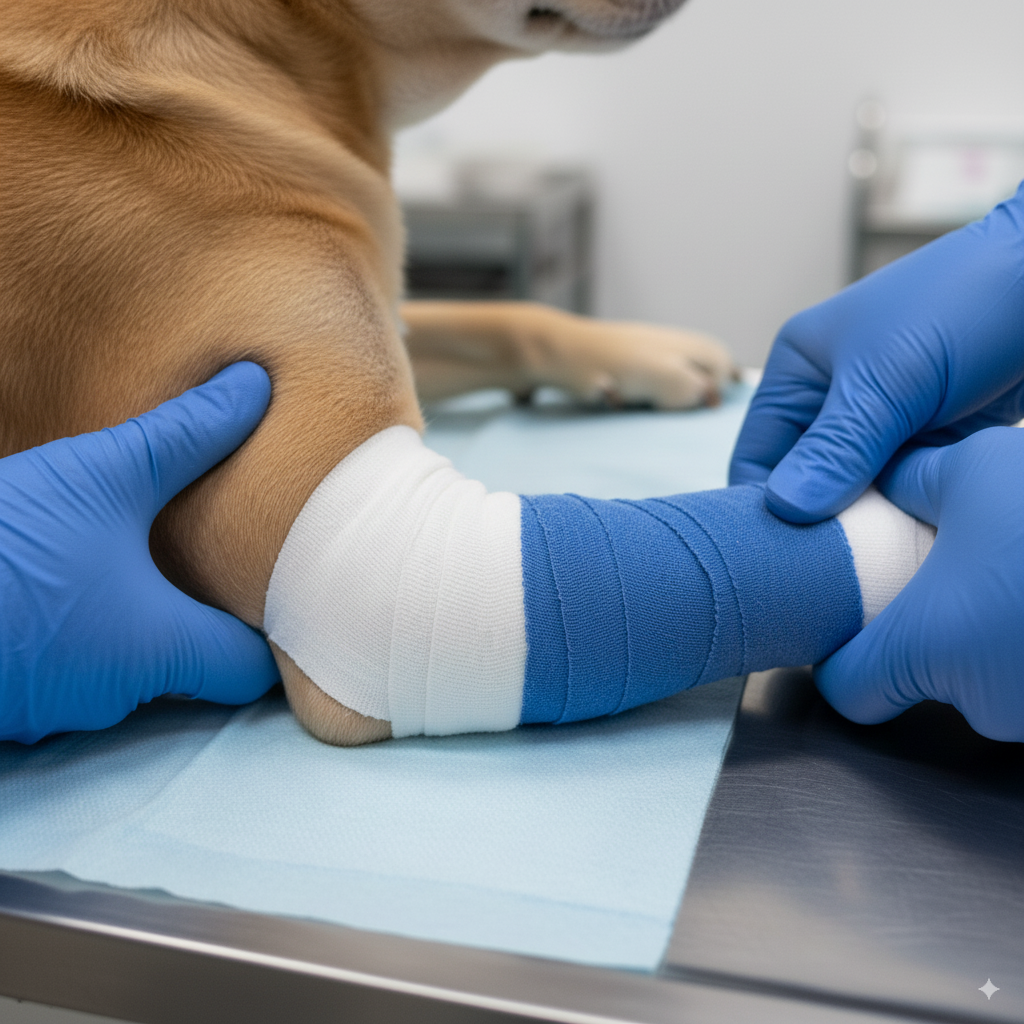
Step 2: Medical and Supportive Therapies
While not a primary cure, some medical treatments can support the healing process, especially if there is mild inflammation. Non-steroidal anti-inflammatory drugs (NSAIDs) may be prescribed by a veterinarian to reduce swelling, although they are used cautiously and not as a standalone solution. It is critical to avoid certain interventions; for instance, draining the hygroma with a simple needle (aspiration) is generally not recommended as it can introduce bacteria and the fluid almost always returns.
Step 3: Advanced Care (Drainage Procedures)
When an elbow hygroma in dogs becomes very large and restricts movement, or if conservative management fails, more advanced options are considered. The goal is to remove the fluid and prevent it from coming back. A common technique involves placing a temporary drain. A veterinarian may use a Penrose drain or a closed-suction drainage system to allow the fluid to escape continuously over several days. This procedure is performed under sedation or anesthesia and helps the collapsed tissue layers heal together, obliterating the pocket where fluid once collected.
Step 4: Surgical Excision for Complex Cases
For a persistent, very large, or hardened elbow hygroma in dogs, complete surgical removal (excision) might be the best course of action. This is especially true for hygromas that have developed complications like severe infection or ulceration. The surgery involves carefully removing the entire fibrous sac. While it is a more invasive procedure, studies have shown that recurrence occurs in 80% of dogs treated with drainage compared to only 20% of those treated with surgical excision, supporting surgery as the better option for complex cases. After surgery, preventing pressure on the site with bandages and soft bedding is absolutely critical for healing.
Step 5: Managing Complications Like Infection
An infected elbow hygroma in dogs is a serious medical issue. If bacteria enter the hygroma, either through the skin or from an attempted draining, the fluid becomes pus, and the area will be warm, swollen, and painful. This requires aggressive treatment, which typically includes a course of antibiotics based on culture results. In many cases, the infected hygroma will need to be surgically opened, flushed clean, and either drained or completely removed to resolve the infection.
Your At-Home Care Checklist for Managing an Elbow Hygroma
If your veterinarian has diagnosed a simple elbow hygroma in dogs, your role at home is vital for a successful recovery.
- [ ] Upgrade Bedding Immediately: Replace all hard-surface resting spots with thick, orthopedic foam beds.
- [ ] Use Protective Sleeves: Purchase a padded elbow protector or sleeve to provide constant cushioning.
- [ ] Monitor the Hygroma Daily: Check the area for any changes in size, heat, redness, or discharge.
- [ ] Encourage Rest on Soft Surfaces: Use positive reinforcement to train your dog to choose its new soft bed.
- [ ] Keep the Area Clean and Dry: Ensure the skin over the hygroma is not irritated or moist.
- [ ] Follow Veterinary Instructions: Administer any prescribed medications exactly as directed and attend all follow-up appointments.

Estimated Cost of Treatment in Canada (2025)
The cost to treat an elbow hygroma in dogs in Canada can vary significantly based on the severity and chosen treatment. The following are general estimates and do not include the initial consultation fee.
| Treatment Tier | Description | Estimated Cost Range (CAD) |
| Conservative Care | Includes soft bedding, elbow pads, and monitoring. | $75 – $250 |
| Medical Management | Includes vet visits, NSAIDs, and potentially bandaging. | $200 – $500 |
| Drainage Procedure | Includes sedation/anesthesia, drain placement, and follow-up. | $600 – $1,500 |
| Surgical Excision | Includes full anesthesia, surgery, and post-op care. | $1,500 – $3,000+ |
Note: Prices vary by province, clinic, and the specific needs of the dog.
4 Essential Tips to Prevent Elbow Hygroma in Dogs
From my years in clinical practice, I can confirm that prevention is always better than treatment for an elbow hygroma in dogs.
- Invest in Quality Bedding. This is the single most effective step. Provide orthopedic beds for your large or senior dog from a young age.
- Cover Hard Floors. If your home has mostly hard floors, place soft rugs or mats in areas where your dog likes to rest.
- Maintain a Healthy Weight. Keeping your dog at a lean body weight reduces the overall pressure on their joints, including the elbows.
- Manage Mobility Issues. For dogs with arthritis, work with your veterinarian to manage their pain. A more comfortable dog is less likely to drop heavily onto the floor, reducing trauma to the elbows.
How We Researched This Article
To ensure this guide is both accurate and authoritative, our content is grounded in evidence-based veterinary medicine. Every medical claim is supported by peer-reviewed research and trusted veterinary sources. We referenced the Merck Veterinary Manual, publications from PubMed, and guidelines from leading veterinary institutions to provide reliable, people-first information for managing an elbow hygroma in dogs. Our goal is to blend clinical precision with practical advice you can trust.
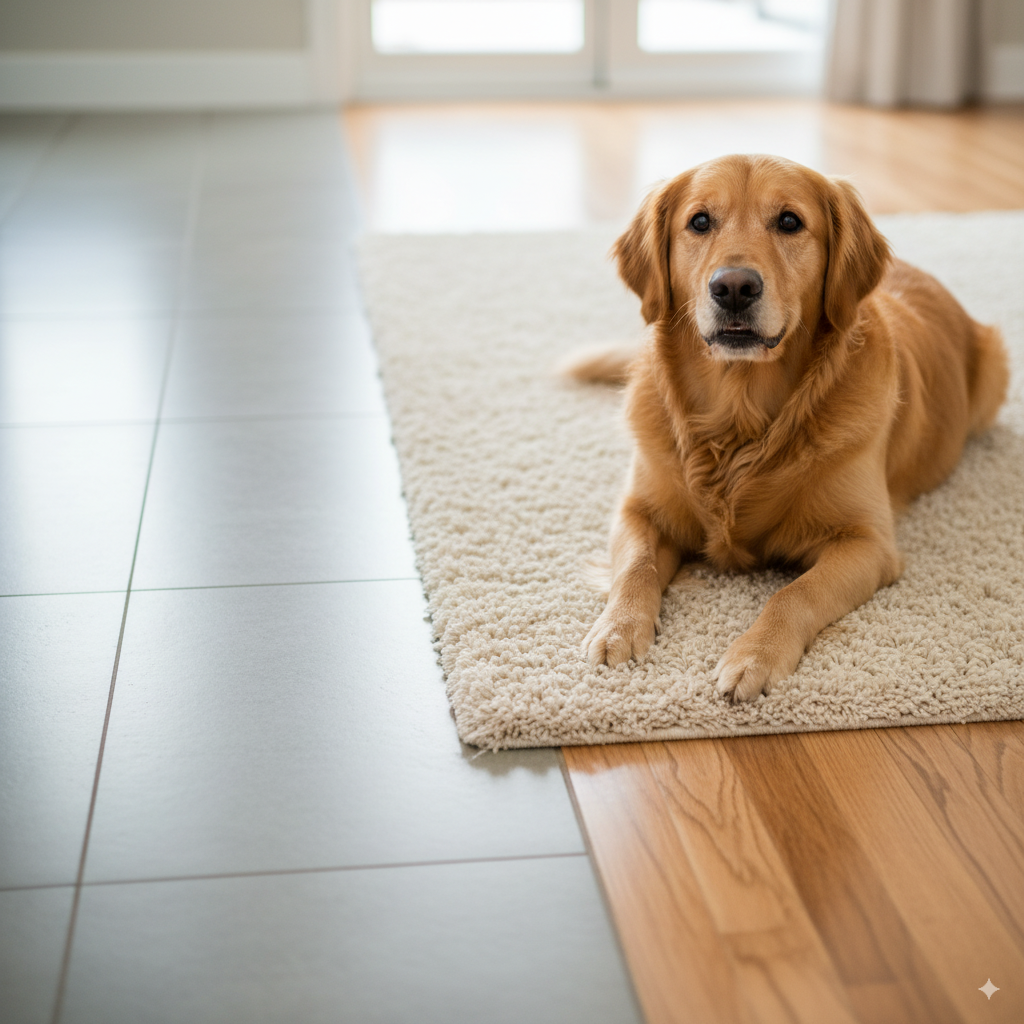
Frequently Asked Questions About Elbow Hygromas
1. How long does it take for a dog’s hygroma to go away?
With consistent conservative management, most uncomplicated elbow hygromas resolve in 14–21 days, provided the source of pressure is removed.Healing time for surgically treated hygromas is longer and depends on the procedure.
2. Can you drain a dog’s hygroma at home?
No, you should never attempt to drain an elbow hygroma in dogs at home. Puncturing the skin can introduce dangerous bacteria, leading to a painful infection and making the condition much more difficult to treat. This procedure must be performed by a veterinarian using sterile techniques.
3. What happens if a dog’s hygroma bursts?
A burst hygroma is a medical emergency. It creates an open wound that is highly susceptible to infection and other complications.If this happens, you should contact your veterinarian immediately for guidance on how to clean the area and for professional medical care.
4. Will an elbow hygroma go away on its own?
Small, uncomplicated hygromas can sometimes go away on their own if the source of the pressure is completely removed early on. However, larger or persistent hygromas typically require veterinary intervention to resolve.
Conclusion
Seeing a lump like an elbow hygroma in dogs can be worrying, but it is a manageable condition. As we’ve discussed, this fluid-filled cushion is simply your dog’s body trying to protect itself from the repeated pressure of lying on hard surfaces. By taking proactive steps—providing plush bedding, protecting the elbows, and maintaining a healthy weight—you can effectively manage and, more importantly, prevent this issue. If you ever have concerns, especially if the area becomes painful or the skin breaks, your veterinarian is your most trusted partner in ensuring your dog remains healthy and comfortable.

